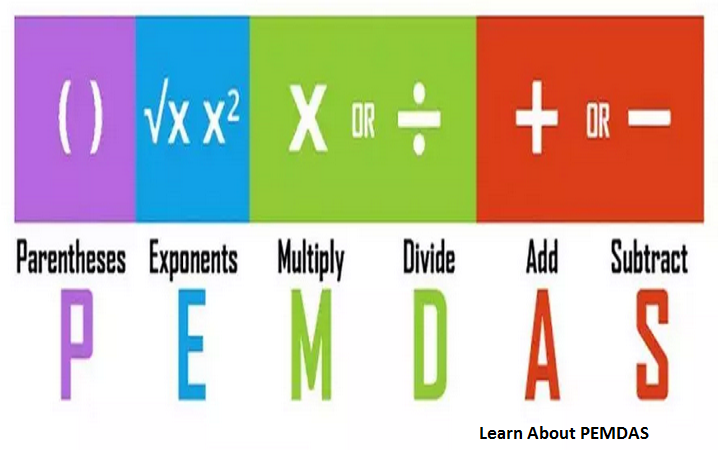There are certain rules to be followed regarding the order of mathematical operations while performing the simplification of any arithmetic expression. A mathematical expression can involve multiple operations and we need to go through various steps to perform various operations in a definite sequence to reach a correct solution. A convenient method has been evolved to remember the sequence that helps in performing the simplification of mathematical expressions.
This method is called PEMDAS rule which indicates the sequence of operations to be followed while solving expressions having multiple operations. This is basically the acronym for the order of operations to be used. The full form of PEMDAS is given as follows:
- P – Parentheses
- E – Exponents (Powers and Roots)
- M - Multiplication
- D - Division
- A - Addition
- S - Subtraction
Explaining the Rule
- P: Start solving the expression with calculations within the parentheses or brackets. For the brackets, priority is given for small brackets ( ), then curly brackets { } and then big brackets [ ].
- E: The second operation is the calculation of exponential expressions. For the most part, they are communicated in power or roots.
- MD: After exponents, perform the multiplication and division operations, whichever comes first in the equation while going from left to right.
- AS: At last, addition and subtraction are performed whichever operation comes first while moving from left to right.
PEMDAS rule gives a structured order of operations to get a unique answer for any mathematical expression. There is a sequence that needs to be followed according to the PEMDAS method that makes the calculations easier and gives the correct solution. Learn more about this topic at cuemath.
Important Points about PEMDAS
- P is the first letter that means the calculation starts with which is enclosed in parentheses.
- E is the second letter that stands for exponents which are to be solved next.
- The next letter ‘M’ appearing before ‘D’ does not mean that we have to do multiplication before division but to follow the order from left to right whichever comes first.
- Then A (addition) and S (subtraction) are to be carried out in the order that appears first from left to right.
Maths Classes
A lot of students find it difficult to cope with the subject of mathematics in absence of proper guidance to help them understand the basic concepts of mathematics. To meet the needs of students several institutions have come up with the offer of providing maths tuition by expert mentors. Math classes are conducted offline as well as online. With the global spread of the pandemic which forces the educational institutions to close down, the online class has become popular worldwide by allowing teachers and students to connect virtually using various digital applications. Students can also access the course materials and interact with teachers to get the necessary support and resources online. The teachers are equipped with the advanced tools and techniques for teaching and the students also make the best use of these platforms to get their knowledge and skills updated. The classes are designed to cover different topics of mathematics as per the course requirements of the students of different standards.
Mathematics classes offer the flexibility of studying from any location and time with the help of online platforms. However, students have to devote sufficient time and attention to learning the core concepts of mathematics. To create a student-friendly environment, the math classes focus on an engaging and interactive mode of learning that helps students to improve their concentration, logical approach, and problem-solving skills. Online classes can be quite useful for students as they continue the classes along with their studies by managing the time schedule and other activities. The math classes allow students to track their progress through regular assignments and work towards improving their performance. The math classes also help students to build their confidence and time management skills.

